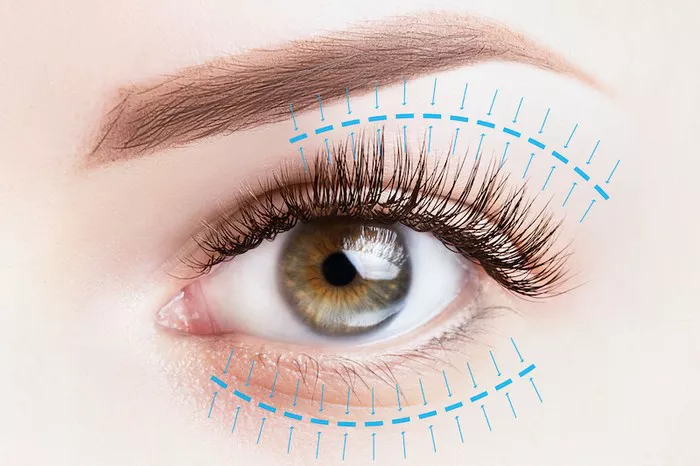Blepharoplasty, commonly known as eyelid surgery, is a cosmetic procedure that aims to rejuvenate the appearance of the eyelids by removing excess skin, fat, and muscle. Traditionally, blepharoplasty has been performed surgically, requiring incisions and a recovery period. However, advancements in aesthetic medicine have led to the development of non-surgical alternatives, offering individuals a less invasive option to achieve their desired results. One such alternative is non-surgical blepharoplasty, a procedure that utilizes various non-invasive techniques to address eyelid concerns. If you are considering this treatment, you may be wondering: how long does non-surgical blepharoplasty last? Let’s delve into this topic and explore the factors that influence the longevity of the results.
Understanding Non-Surgical Blepharoplasty
Non-surgical blepharoplasty, also referred to as a non-surgical eyelift, offers a non-invasive approach to address common aesthetic issues such as droopy eyelids, under-eye bags, and fine lines around the eyes. Instead of making incisions, this procedure utilizes innovative techniques such as dermal fillers, radiofrequency, laser, or ultrasound energy to lift and tighten the skin around the eyes.
Dermal fillers, such as hyaluronic acid-based products, are commonly used in non-surgical blepharoplasty to restore volume and improve the appearance of hollowed areas. These fillers work by replenishing lost volume, resulting in a more youthful and rejuvenated look.
Radiofrequency, laser, or ultrasound devices are used to stimulate collagen production and tighten the skin around the eyes. These energy-based treatments induce controlled thermal damage, triggering the body’s natural healing response and leading to the production of new collagen fibers. As a result, the skin becomes tighter and firmer over time.
Factors Influencing the Duration of Non-Surgical Blepharoplasty Results
The longevity of non-surgical blepharoplasty results can vary from person to person, depending on several factors. While it is challenging to provide an exact timeframe for how long the results will last, the following factors play a significant role:
1. Individual Factors
Each person’s anatomy, genetics, and aging process are unique. These factors can affect how long the results of non-surgical blepharoplasty will last. Some individuals naturally have more resilient and elastic skin, which may contribute to longer-lasting results.
2. Type of Treatment
The specific non-surgical techniques used during the procedure can also influence the duration of the results. Dermal fillers typically provide immediate results, but their longevity can vary depending on the type of filler used and individual factors. Hyaluronic acid fillers usually last between 6 to 12 months, while other longer-lasting fillers may provide results for up to two years or more. Energy-based treatments, such as radiofrequency or ultrasound, stimulate collagen production, and the results can continue to improve over several months. However, touch-up treatments may be necessary to maintain the desired outcome.
3. Lifestyle and Aging
Lifestyle choices, such as smoking, excessive sun exposure, and poor skincare habits, can accelerate the aging process and potentially shorten the duration of non-surgical blepharoplasty results. Taking good care of your skin, protecting it from harmful UV rays, and following a healthy lifestyle can help prolong the effects of the treatment.
4. Maintenance and Follow-Up Treatments
While non-surgical blepharoplasty provides noticeable results, they are not permanent. To maintain the desired outcome, follow-up treatments are often recommended. The frequency of these treatments will depend on the individual and the specific techniques used. Regular maintenance sessions, such as touch-ups with dermal fillers or periodic energy-based treatments, can help sustain the results and ensure long-term satisfaction.
5. Aging Process
It is important to keep in mind that non-surgical blepharoplasty does not stop the natural aging process. Over time, the skin will continue to age, and new concerns may arise. Therefore, individuals may choose to undergo additional treatments or explore alternative options as needed.
Conclusion
Non-surgical blepharoplasty offers an appealing alternative to traditional surgical eyelid procedures, providing individuals with a non-invasive way to address their eyelid concerns. While the exact duration of the results may vary from person to person, non-surgical techniques can provide noticeable improvements in the appearance of the eyelids. Factors such as individual characteristics, the type of treatment used, lifestyle choices, and maintenance treatments all contribute to the longevity of the results. If you are considering non-surgical blepharoplasty, it is essential to consult with a qualified aesthetic professional who can assess your unique needs and provide personalized recommendations for achieving long-lasting results.

